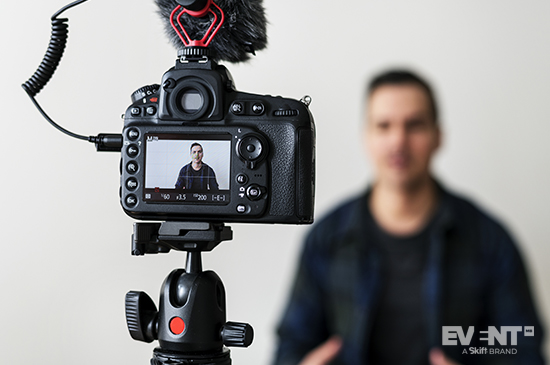Securing great speakers is a challenge for all planners. Be they professional speakers or subject matter experts, they all deserve to have a good speaker experience. But how many of us design the speakers’ journey at our virtual events?
I am certainly guilty of that myself — something I realized when I spoke with Sarah Shewey, the CEO of Happily, on how her team produced the Virtual DNC Caucus & Council Meetings.
It is clear that event professionals are more focused on the attendee journey/experience than the speaker’s, and so they should be, but the speaker journey should not be neglected. Confusing tech, a lack of flexibility or a lack of clear expectations are just some of the many things that impact a speaker’s ability to deliver a great session and engage the audience.
Designing a positive speaking experience into your back-end event execution will make speakers perform their best. To do that, you need to understand the struggles of virtual speaking engagements and what you can do to allay them.
Barriers to a Positive Speaker Experience
UNCLEAR EXPECTATIONS OR LINES OF COMMUNICATION
Suppose I’m speaking at a large virtual event with many speakers. I may get contacted by multiple people, including my initial contact, a speaker coordinator, a marketing coordinator, the AV team, and a session host or track moderator. The sheer amount of communication can be overwhelming, but alarm bells ring when I detect a lack of cohesion in the requests I receive. Multiple and lengthy speaker calls and overreliance on speakers to act as event promoters can also be an issue.
LACK OF AUDIENCE INTERACTION
When I speak at an event I like to have as much control as possible. I understand how to look and sound my best on camera, and I always look to interact with the audience via polls and chat or Q&A. I’m happy to adapt to whatever systems the event is using, provided I can test them out in advance.
I realize not all speakers feel the same. Some want to focus only on delivering their talk without even thinking about the technology. I would still make the case that audience feedback is desirable for every speaker. After all, it’s the only way to read the room in a virtual environment.
RESTRICTIVE AV PRODUCTION PROCESS
As virtual events develop, we see significant improvements in the production quality, with AV experts creating impressive visual experiences. A standard process is to use Zoom or Microsoft Teams to capture a speaker live and process this video feed in OBS or vMix. This process enables frames, lower thirds, and other tv-style on-screen graphics to be applied to multiple speakers and slides. This video output is then streamed to Vimeo or YouTube and embedded in the virtual event host platform.
The result is undoubtedly more visually appealing than the standard speaker view in Zoom. However, there is a downside. The extra layer of video production can also be very restrictive for speakers. It typically adds a few seconds of delay, making it much harder to use audience interaction features, and the speaker is often using a completely different system than the audience. In a physical event, the equivalent would be a speaker being on stage but entirely blinded by the lights and unable to interact with the audience or, worse, speaking from a different room altogether.
In our attempts to combat Zoom fatigue, audience interaction is top of the list for keeping audiences engaged. So this presents us with a challenge. How do we create a balance between an impressive visual production and audience interaction?
Ensuring a Positive Experience for Speakers
When it comes to the event design, it’s essential to partner with speakers to create an optimal environment that maximizes the impact of their session and message. Each speaker’s level of comfort with technology and virtual audiences will vary. Professional speakers come with a fee but will almost always be more comfortable on a virtual stage than subject matter experts.
PRE-EVENT
In the pre-event communication, be sure to provide speakers with plenty of context for their session. They must have a clear understanding of the audience’s needs and equally have a direct view of the content shared in other sessions, particularly those directly before and after their session.
PRACTICE, PRACTICE, PRACTICE
Dress rehearsals may appear pointless for virtual events, but this is not so. Virtual events are likely to have more variables than physical events, and production teams have less control over remote speakers. For this reason, a real dress rehearsal is crucial — real in the sense that speakers must connect from the same location and use the same equipment they will use for the actual event. Also, testing all the tools being used and anticipating audience behaviors is highly recommended, particularly where large audience numbers are expected.
AN ALTERNATIVE TAKE
One elegant solution is to pre-record keynotes. This ensures a high production value experience for key mainstage sessions while allowing for more interactivity in other sessions with a more straightforward production. You can get the best of both worlds if keynote speakers can be present during their pre-recorded session and can be active in a chat or deliver a Q&A session after the keynote.
IN CONCLUSION
A solution that balances impressive visual production and audience interaction may not be apparent or straightforward, but designing for the speakers’ user journey is a best practice that could help us reach the elusive goal of keeping virtual audiences engaged.





